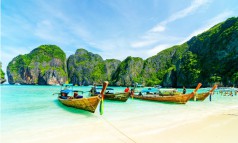



















Wednesday, Apr 16, 2025 10:00 [IST]
Last Update: Tuesday, Apr 15, 2025 17:04 [IST]
Growing up in the Northeast of India, I may have lost count of the number of times people assumed I had an uncle in the army, a father in the army, or a cousin who was a watchman or a guard in Delhi who started his sentence with– “oooo Shaabjiii…”
It became a silent joke. Polite smiles followed by awkward silence when I’d say — “Actually, my dad’s a public servant. And no, we don’t keep khukris under our pillows (Except we know how to use them when needed!)”
But this isn’t just about me. It’s about how a whole community — spread across India — has been boxed into a single stereotype.
Bir Gorkhali…
The word “Gorkhali” or “Nepali” in India often evokes the image of a brave soldier—stoic, loyal, and forever ready to defend– hence the term Bir Gorkhali. While this association is rooted in historical truth, the popular stereotype limits the public imagination of who the Indian Gorkha is and what they have contributed to the nation. To reduce an entire ethnic group to just its military identity is not only simplistic but dangerously reductive.
The roots of the Gorkha stereotype trace back to British colonial times. The British recruited Gorkhas into their army after the Anglo-Nepalese War (1814–1816), impressed by their valor and loyalty. This martial image was reinforced by the recruitment of Gorkhas into the Indian Army post-independence, leading to an enduring association with soldiering.
But here lies the irony: a community with poets, educators, civil servants, entrepreneurs, and artists is often summed up in the word “chowkidar”—as if their cultural contributions were merely footnotes in India’s vast narrative.
When Nigerian writer Chimamanda Ngozi Adichie warned against “the danger of a single story,” she could very well have been talking about the Indian Gorkhas. The dominant narrative reduces us to soldiers, chowkidars, or side characters in nationalistic tales.
Sure, military valor is a proud part of our heritage. The Gorkha regiments have served with extraordinary distinction in both world wars and numerous operations post-independence. But to stop the story there is like saying Rabindranath Tagore was just a lyricist for India’s national anthem.
Gorkha’s role in India’s Freedom Beyond the Battlefield
When one hears of the Gorkha community in the context of India’s freedom struggle, the mind often conjures images of brave men wielding khukris, fighting in distant frontlines under colonial command. While their military service is legendary, the contributions of Indian Gorkhas to the freedom movement transcend the battlefield and enter the realms of civil resistance, political activism, literature, journalism, and institution building.
Take for instance Damber Singh Gurung, a towering figure in Gorkha political history. Born in Kalimpong, he was not only a passionate advocate for Gorkha rights but also one of the earliest leaders to mobilize the community within the framework of Indian nationalism. A lawyer by training and an activist by nature, he co-founded the All India Gorkha League in 1943, an organization that sought to ensure political representation and inclusion for Indian Gorkhas in post-independence India (Subba, 1992). He actively participated in the Quit India Movement, enduring imprisonment for his role in resisting colonial authority (Sharma, 2006). His election to the Constituent Assembly of India, where he advocated for Gorkha interests until his untimely death in 1948, symbolized the community’s commitment to shaping the Indian republic from within (Gurung, 2008).
Outside the direct arena of politics, reformers like Thakur Chandan Singh were engaging in powerful forms of cultural and intellectual resistance. Often referred to as the father of Nepali-language journalism in India, Singh’s pioneering newspaper Gorkhali (1901) became a critical platform for promoting education, political awareness, and cultural pride among Gorkhas (Subba, 1999). His efforts not only challenged colonial misrepresentations but also inspired a generation of Indian Nepalis to engage in public discourse (Rai, 2013).
This spirit of resistance wasn’t limited to elite leaders. Across Darjeeling, Kalimpong, Assam, and even Shillong, Gorkha students, traders, and workers participated in Gandhi-led movements like Non-Cooperation and Civil Disobedience. Oral histories and community archives point to the role of Gorkha youth organizations and local unions in organizing hartals, boycotts of British goods, and public awareness campaigns during the 1920s and 30s (Pradhan, 2010). These were acts of everyday patriotism—often erased in dominant narratives but crucial to the grassroots momentum of the freedom movement.
Gorkhas were also part of the constitutional imagination of modern India. Alongside Damber Singh Gurung, figures such as Jung BahadurRai, an advocate and political leader from Darjeeling, contributed to debates around citizenship, inclusion, and the cultural rights of minorities (Sharma, 2017). Their advocacy emphasized the need for recognizing Indian Gorkhas not as outsiders, but as equal participants in the making of the nation.
___________________
This article was originally published onwww.indiangorkha.com and has been republished with permission from the author. All rights remain with the original author.
About the Author
Shweta
Raj Kanwar is a development communication & media specialist, and founder
ofwww.indiangorkha.com, a platform that documents the culture,
history, and identity of Indian Gorkhas. Her writing explores identity,
marginalization, and the power of storytelling to reclaim space in public
consciousness. She is based out of Meghalaya and Darjeeling.
